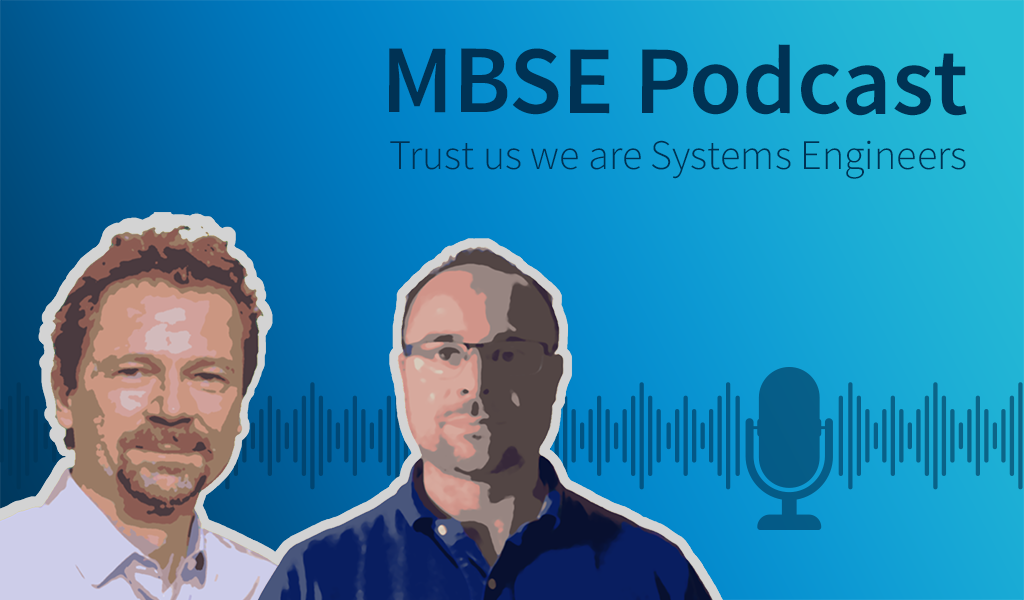It’s September 2020 – a lazy late summer evening: Tim Weilkiens and I are holding a virtual meeting to discuss what we would like to present in our joint contribution to Systems Engineering 2020. It will boil down to an example from the current development status of SysMLv2 – something new – a live demo would be great – hardly anyone in Germany knows this yet. But why? You should actually start a podcast!
That’ s how you can summarize the birth of our podcast idea “The MBSE Podcast – Trust us we are Systems Engineers”
Why choose MBSE?
But what is it all about? Tim, author and board member of oose e.G. and I, MBSE & PLM consultant and team leader at CONTACT Software, are both passionate about systems engineering. With this podcast we set out on a mission to spread the word about MBSE (Model-based Systems Engineering). MBSE has gained momentum in Germany over the last ten years. This means that it has arrived in many industries or at least the awareness that systems engineering is a key competence for mastering the increasing complexity of interdisciplinary product systems.
However, finding a solution to a complexity problem is certainly not easy in itself. This applies very well to the topic MBSE. MBSE is very multifaceted and not very easy for newcomers to grasp: Methods, processes, languages, roles, architectures, frameworks, tools and training – to name just a few.
MBSE from A to Z – for beginners and advanced
This is where we start to explore the topic piece by piece in a relaxed atmosphere. There are plenty of books, training courses and tools available. But in our podcast we would also like to take a look behind the scenes and pass on our knowledge between the lines of specifications. We benefit from our private and professional engagement with the Gesellschaft für Systems Engineering (GfSE), the International Council on Systems Engineering (INCOSE) and the Object Management Group (OMG). Thus, we are very close to current developments in the (MB)SE field and are in close exchange with national and international key players from application, consulting, research and tools.
The start of the continuous podcast
On October 30, 2020 the podcast started with a teaser on YouTube. The first content episode entitled “The History of SysML” followed on November 5, 2020. We plan to publish one or two episodes per month.
Why on YouTube?
The platform offers extensive infrastructure for us and very easy access for viewers.
Why live?
Tim and I run the podcast in our spare time. We simply do not have the time to cut episodes for evenings. The live stream and the recording available afterwards are as they are: 100 percent authentic. In the future, we plan to include interaction with the listeners via live chat.
For those who prefer to listen to a podcast, we publish in addition to YouTube the audio track on Spotify and Apple Podcasts.



